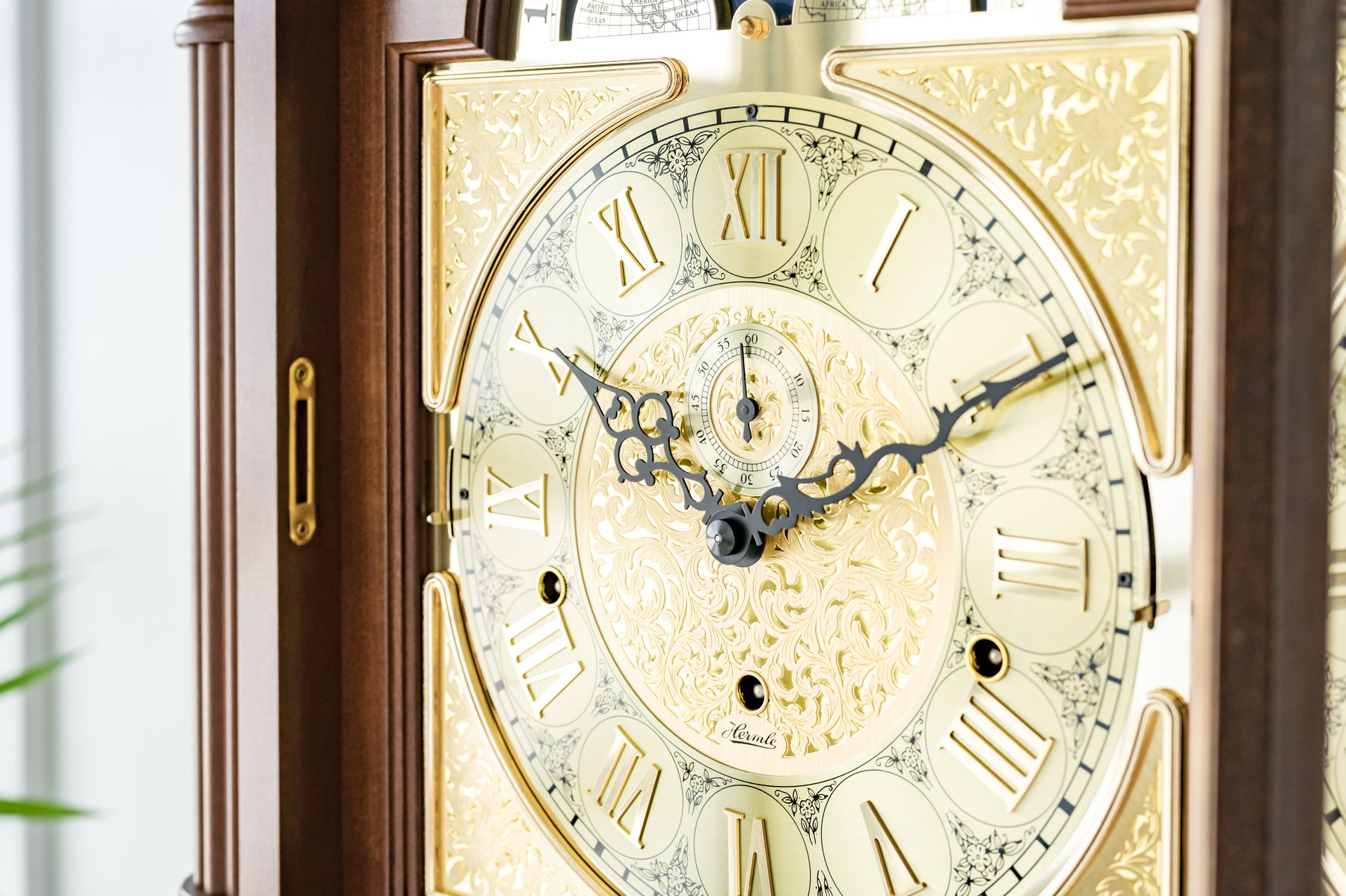1-(800)-642-0011
1-(800)-642-0011

The elegant grandfather clock, a symbol of heritage and timelessness, has graced homes for centuries. With its distinctive appearance and mesmerizing tick-tock, these classic timepieces have captured our imaginations since their inception. But have you ever wondered how a grandfather clock works? Join us as we delve into the fascinating world of horology to unveil the secrets that make these beautiful clocks tick.
The Origins of the Grandfather Clock: The grandfather clock, also known as the longcase clock or tall-case clock, was first created by British clockmaker William Clement in 1670. Its invention was a significant advancement in clock technology, as it allowed for more accurate timekeeping through the introduction of the pendulum. This innovation led to the clock's unique tall design, as it provided enough room for the pendulum to swing gracefully.
The Anatomy of a Grandfather Clock: A grandfather clock is an intricate assembly of gears, weights, and levers, all working in harmony to keep time. The primary components include:
a) The Case: The wooden housing that encloses the clock's mechanisms, often beautifully crafted and embellished with artistic designs. b) The Face: The clock's dial, where the hands indicate the time. c) The Pendulum: A swinging weight that regulates the clock's timekeeping, the signature element of a grandfather clock. d) The Weights: Suspended by cables, these heavy weights power the clock's movement. e) The Movement: The clock's mechanism, composed of gears and levers, that controls the hands and the striking of the chimes.
The Pendulum: The Heart of the Grandfather Clock: The pendulum is the key to a grandfather clock's accuracy. As it swings back and forth, it regulates the clock's speed. The length of the pendulum dictates the time it takes for a full swing, with longer pendulums swinging slower than shorter ones. This precise motion is maintained by the escapement, a mechanism that releases the clock's gears at specific intervals, allowing the pendulum to continue swinging.
The Power of Weights: A grandfather clock relies on the gravitational pull of its weights to keep its gears moving. These weights, usually made of metal, are suspended on cables or chains and gradually descend over time. As the weights descend, they release energy to the clock's movement, allowing it to keep ticking. To keep the clock running, the weights must be wound back up periodically, usually once a week.
The Melody of Time: The Chimes and Strikes: One of the most enchanting aspects of a grandfather clock is the melodious chimes and strikes that announce the passage of time. The clock's movement, powered by the descending weights, activates a series of hammers that strike tuned rods or bells to produce a harmonious melody. Most grandfather clocks chime at the quarter-hour, with a more extended melody and a strike count corresponding to the hour at the top of the hour.
Grandfather clocks are more than just timekeeping devices; they are a testament to human ingenuity and craftsmanship. A marvel of engineering and art, these captivating timepieces have withstood the test of time, charming generations with their soothing tick-tock and melodious chimes. The intricate dance of gears, pendulums, and weights that power a grandfather clock serves as a beautiful reminder of our enduring quest for precision, beauty, and a connection to the passage of time.